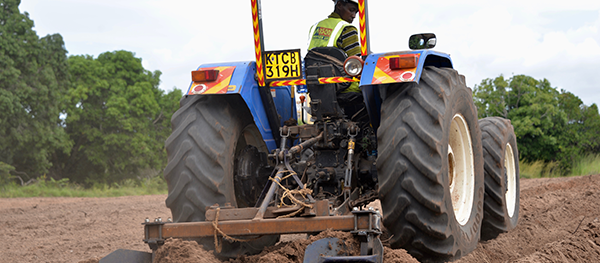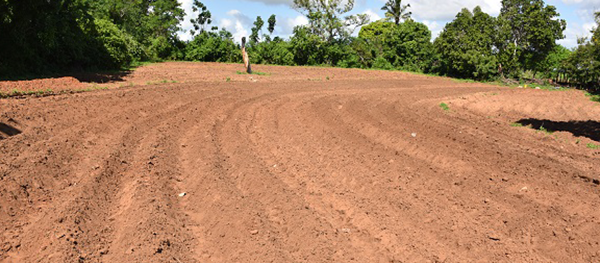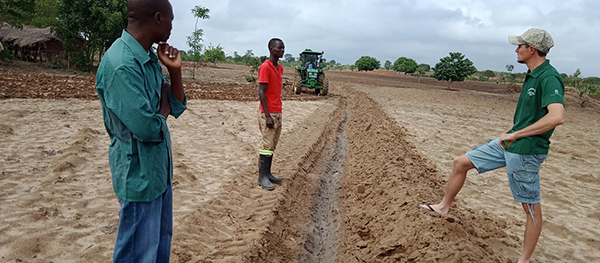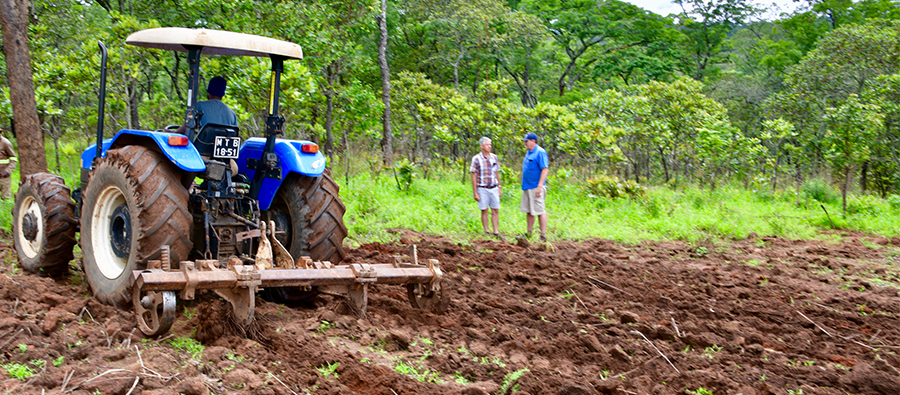Thomas Ngotho, Senior Consultant for Crops and Agronomy at Business for Development, discusses the ways farmers can maintain the health of their soil.
Soil health is a creeping problem. 95% of our food is directly or indirectly produced on our soils, but according to the Global Land Outlook report, fertile soil — a non-renewable resource — is being lost at a rate of approximately 24 billion tons a year.
Smallholder farmers produce almost a third of the world’s crops. In Africa about 80% of the population works in agriculture, mainly at smallholder farms. Smallholder farmers face many competing costs, such as seeds, fertilisers, and transport, and as many of them live on less than US$2 per day they must pick their ‘yield improving’ battles carefully.
However, soil management can be cheap, simple, and effective. Across Africa, we at Business for Development have promoted and implemented the following soil management techniques for smallholders.
Mechanised Land Preparation
In Africa, most smallholders prepare their land using traditional hand hoes. However, mechanised land preparation is far better at improving the nutrient and water content of soil while reducing weeds and erosion rates. Business for Development has worked to try to get farm machinery into the hands of smallholders.
One way is to help farmers pool their resources. In Kenya, we initiated the formation of a farmers’ cooperative society which brought all our farmer clients together, bolstering their bargaining power to acquire farm machinery.
Another way is to bring competition into the farm machinery market. At the beginning of the long rains, we brought tractor operators – some from as far as neighboring counties – onto a platform that provided competitive prices for farmers, and challenges local monopolies.
Yet another way is taking advantage of unused machines. In Kenya’s Kwale County, we engaged the local government to make use of their 42 tractors for the benefit of local farmers, which would otherwise have gone unused beyond government food security programs.

Mechanised land preparation.
Contour Ploughing
Rather than using hand hoes, some communities use oxen-drawn ploughs, which plough up and down slopes. These create channels that can quickly carry away seeds and topsoil, leading to serious soil erosion, while also leaving the soil poorly worked due to shallow ploughing.
In contrast, we advocate contour ploughing, which creates furrows that follow the curves of the land rather than straight up and down slopes. Contour ploughing forms ridges which slows the water flow, spreads water evenly during storms, and protects the soil against erosion.

An example of Contour Ploughing.
Ripping
Smallholders typically own a small parcel of land, and so they often need to use it for multiple purposes. This includes letting their livestock graze off-season on the site where crops are grown, which can trample and pack the soil into hardpan – which renders it impervious to water.
The best way to mitigate this is through ripping the hardpan soil. Ripping involves disturbing the soil below the normal cultivation layer without inverting the soil. By breaking up the soil, ripping can free the way for roots to penetrate the soil and access water and nutrients, leading to yield increases.
Up-Slope Terracing
Up-slope terraces are made by identifying contours on the farmland and developing matching terraces and trenches. At the lip of the terrace, farmers grow grass to prevent water runoff and provide animal feed. The runoff comes with silt and sediment, which are very rich in nutrients and improve the soil for crop production.
The up-slope terrace approach was used by Business for Development in our cotton program in Kwale, Kenya. None of the farmers in our program who adopted up-slope terrace technology experienced adverse impacts from drought, with the reserves of water and nutrients allowing them to produce substantial yields.

An example of terraced farmland.
Grass Strips for Soil Health
Maintenance of the soil structure is critical in producing healthy crops. In areas where furrow irrigation is practiced for crop production, the use of grass strips along certain contours on irrigated can help preserve soils.
Vetiver grass, planted continuously on the contours, produces narrow dense hedges; this slows surface runoff, and gives water time to soak into the soil. Runoff soil from upslope is deposited and spread upwards from the hedge, keeping the site fertile. The deep and thick roots of the grass also bind the soil, making it difficult to dislodge and helping to maintain the soil’s structure.
Shallow Retention Ditches
Through digging small ditches on the contour lines of an incline and planting water-loving plants at regular intervals within them, water can be conserved in a farm for use through seepage and drainage.
In Mozambique, we used shallow retention ditches to maximise land resource use. The ditch stopped excess runoff while also serving as a site to establish banana orchards. Through also planting grass on the ridges, the farmers we worked with were given access to a reliable source of vegetation to thatch their homes with.

Volunteers with a shallow retention ditch.
Building Resilience
All the above techniques can also help smallholders improve their resilience to environmental shocks. Earlier this year, Mozambique faced two devastating tropical cyclones; thanks to these soil management techniques, farmers we worked with could capture water from the storms for future use, all while preserving their topsoils.
In the coming years, as we face climate change and continued land degradation, farmers will need access to credible information about soil and how to manage it. Thankfully for smallholders, the tried and tested techniques described above can keep soil management simple, impactful, and sustainable.



